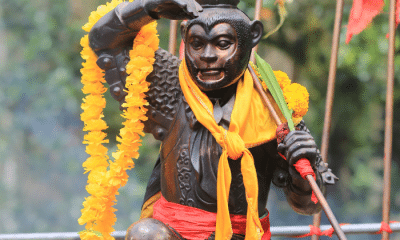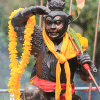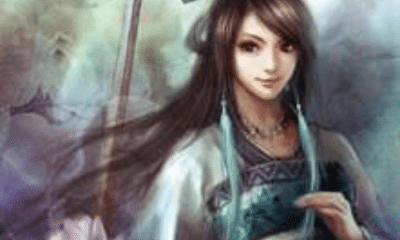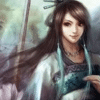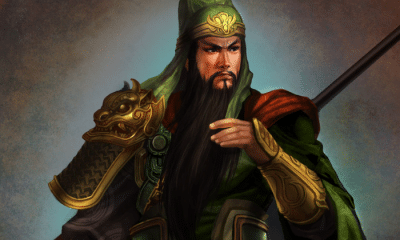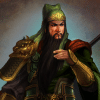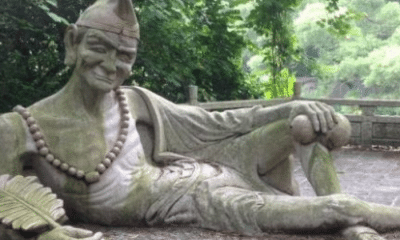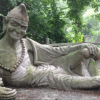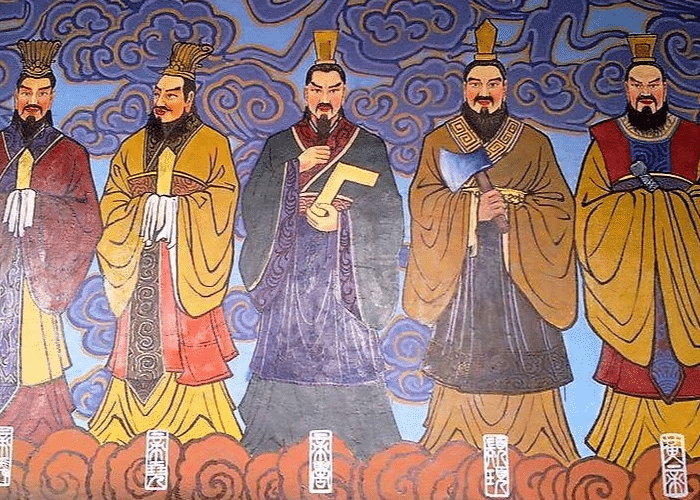
Chinese
Wufang Shangdi: The Five Faces of Heaven
Wufang Shangdi: The Five Faces of Heaven
The Wufang Shangdi was not a single god in Chinese religion. Instead, they were five aspects of a single supreme deity whose roles in the culture were as varied as they were.
In Chinese cosmology and religion, it was not uncommon for a single god to be associated with many different aspects of life and the world. Many gods, for example, were linked to both sites on Earth and different stars or constellations.
No god, however, had as broad of a domain as Taiyi, the supreme god of Heaven. His role was so vast that it couldn’t even be contained within one deity.
Instead, Taiyi was often seen as a god who manifested in five aspects. The Wufang Shangdi were five deities who collectively made up Taiyi.
Each of the five gods was distinct, with his own imagery, role in the world, and place in the cosmos. As a group, they had dominion over everything from the cardinal directions to the seasons.
So how did the Wufang Shangdi develop and take on so many roles in Chinese religion? Read on to find out how the supreme god was split into five forms!
The Five Aspects of Wufang Shangdi
In Chinese religion, Heaven was ruled over by a supreme deity. While this god could be seen in a single form, however, he could also be divided into five different aspects.
These five manifestations of the supreme god were known by many names. One of the most common was Wufang Shangdi, or “Five Forms of the Highest Deity.”
Each of these gods were connected to a wide variety of things in both the physical and spiritual worlds. They were each associated with a specific color, constellation, planet, mountain, and dragon god.
According to tradition, the other gods were born from these five. By impregnating mortal women, they became the ancestors of both gods and China’s emperors.
The Wufang Shangdi are typically referred to by their colors. They also appear often in Chinese literature as separate entities, each with their own domain and mythology.
The Yellow Diety, Huangdi, was the ancestor of all Chinese people. He was also thought to be the originator of Huaxia, the concept of Chinese civility and the nation.
As a stellar god, the Yellow Deity was associated with the Big Dipper and the North Star. His planet was Saturn, but he was also sometimes thought of as the sun god.
While other aspects of the supreme deity represented cardinal directions, Huangdi was the center. He was the hub from which everything else came, leading to him sometimes being called the Four-Faced God.
Older traditions considered the Yellow God to be the deity of light, including the sun and lightning. In later traditions, he was more of an earth god and represented the path from the material world to immortality and the divine.
The Yellow Deity’s traditional foe was the Red Deity, Chidi. Although they were brothers, the two battled one another.
Chidi was also the Flame God, Yandi. This put him at odds with Huangdi, who was associated with the Dragon and the element of water.
Despite this, however, the Red Deity was not an entirely destructive force. He was one of the great patrons of humanity.
The Red Deity was the god of agriculture and the market. He gave people medicinal plants, helped them to domesticate animals, and became the patron of all sciences and crafts.
He was the god of Mars and of the south. He was often shown with the horns of a bull in his role as a farming god.
The White God, Baidi, was associated with the planet Venus and the west. His animal was the tiger.
The White Deity was also the god of autumn. He was associated with metal as an elemental god.
Heidi was the Black Deity. His planet was Mercury and he was associated with the north.
The Black Deity was often considered mysterious and otherworldly. His stellar animal was a hybrid often called the tortoise-snake and his dragon was sometimes called the Mysterious Dragon.
He was the god of winter, water, and sometimes warfare.
Cangdi is sometimes known as the Green Deity, but is also called Bluegreen to avoid confusion with the Jade Emperor. He was associated with Jupiter and the east.
As the Green Diety, Cangdi was a god of fertility and growth. Therefore his season was the spring and he was linked to the fertility goddess Bixia.
My Modern Interpretation
The cult of the five deities is one of the most ancient in the world. Evidence of the five gods exists as far back as the Stone Age.
While multiple aspects of the supreme god were certainly an early development in Chinese culture, the official number and designations of the gods are relatively well-attested.
The Qin and Zhou Dynasties coexisted in different parts of China at roughly the same time. Both lasted until the 2nd century BC, with the Zhou ruling in the east from 1046 and the Qin to the west from sometime in the 9th century BC.
During the era, the White, Green, Yellow, and White deities are attested in accounts of official rituals in both dynasties. The Qin largely adopted their customs from the Zhou, so the gods already spanned most of China instead of being localized.
Despite this, however, each was still most closely linked with a particular area. Separate altars were established for each and they were associated with the different directions and sacred sites.
In 221 BC, Qin Shihuang expanded his kingdom and established the Qin Empire. This empire spread the new cult of the four forms of god.
The Qin had officially combined the Red, Yellow, Green, and White deities into a single cult rather than their individual traditions. While the practice of seeing the supreme god in different aspects had existed for hundreds, if not thousands, of years, the Qin made this part of the official state religion.
The Han integrated the Black Deity into the supreme god by the 2nd century BC. New ideas introduced by Confucianism, however, demanded that the worship of the five aspects of the supreme god be reconfigured.
Temples were aligned with the principles of Confucianism. The directions associated with the gods, with the Yellow Deity at the center, were codified within the layout of the temples and their orientation.
In 113 BC, Emperor Wu of Han officially declared that the five gods were the same as Taiyi, the supreme god of Heaven. The emperor officially oversaw the rites of Taiyi’s five aspects along with those of Houtu, the goddess of the Earth.
The five gods had been officially codified within the imperial religion, but their local variations remained.
The Han Empire continuously expanded. As it did, it absorbed the local religions that flourished throughout China.
As aspects of the supreme divinity, the Wufang Shangdi spread as the borders of the Empire did. In newly-conquered regions, they were conflated with existing native gods.
The result was a group of deities who had broad domains. They were constantly associated with new aspects of the world and the cosmos because so many local cults were absorbed into the state religion.
The spread of the Wufang Shangdi mirrors the spread of Han Chinese culture throughout Asia. While many local traditions existed within the vast Chinese empire, they were all codified under imperial power.
In Summary
In Chinese religion, the Wufang Shangdi were the five aspects of Taiyi, the Supreme God. Although often seen as individual deities, they were also inseparable parts of a collective whole.
For example, each represented a direction and season. One deity could be revered for these things, but they had to be seen together to make the whole.
Each of the Wufang Shangdi was also associated with a color. This was part of their name and the corresponding dragon represented them in mythology.
The concept of the multifaceted god was an ancient one in China, dating back to the Neolithic Era, but it took time for the representations of Wufang Shangdi to be codified in Chinese religion.
For hundreds of years, the five gods developed along with the culture they were part of. By the time of the Han Empire, their position as aspects of Taiyi had been established.
The Wufang Shangdi continued to evolve, however. As the Empire expanded, local cults were absorbed into the five aspects.
The result was a collection of gods with rich imagery and symbolism. While the five gods were an ancient concept, thei continued evolution showed the many local traditions that were eventually brought into Han Chinese culture.


